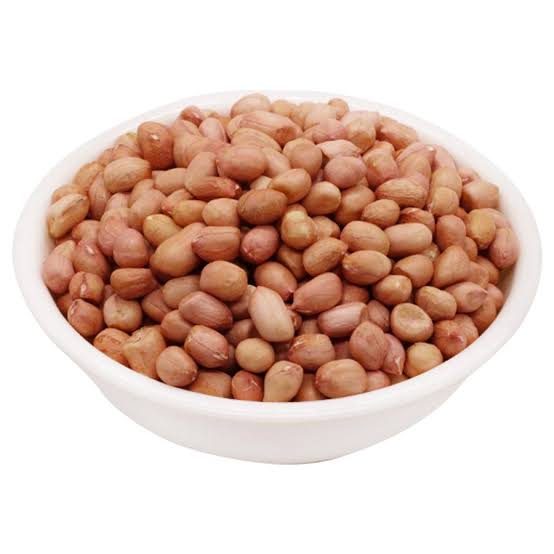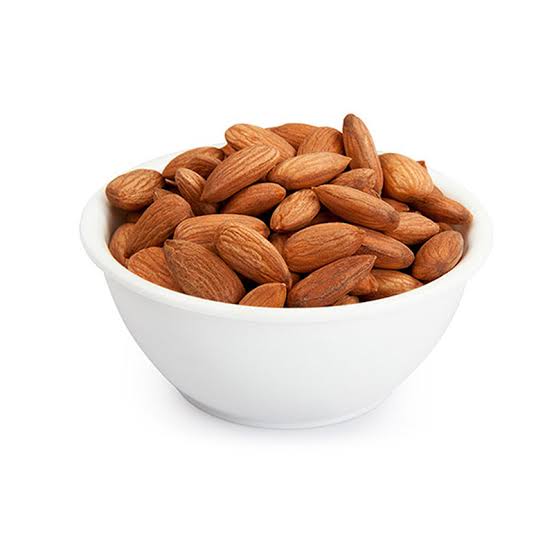In a search for what is the difference between Peanut vs Almond? – Peanuts and almonds are two popular and versatile nuts offering various health benefits and culinary uses. While they share some similarities, there are distinct differences in taste, nutrition, and potential health benefits. In this article, we will explore the characteristics of peanuts and almonds, compare their nutritional profiles, discuss their health benefits, and delve into their culinary uses. So here is a detailed comparison between Peanut and Almond for you.
What are Peanuts?

Peanuts, scientifically known as Arachis hypogaea, are legumes that are grown underground. They are native to South America and have been cultivated for centuries. Peanuts are packed with nutrients, making them a healthy addition to your diet. They are a good source of protein, healthy fats, vitamins, and minerals. Peanuts are also rich in antioxidants, such as resveratrol, which is known for its potential anti-inflammatory properties.
What are Almonds?

Almonds, scientifically known as Prunus dulcis, are tree nuts that grow on almond trees. They are native to the Middle East but are now widely cultivated around the world. Almonds are highly nutritious and are often considered one of the healthiest nuts. They are an excellent source of healthy fats, fiber, vitamin E, magnesium, and calcium. Almonds are also known for their high antioxidant content, which may contribute to various health benefits.
Peanut vs. Almond: Nutritional Comparison
Nutrition facts about peanuts and almonds per 100-gram serving:
| Nutrient | Peanuts | Almonds |
|---|---|---|
| Calories | 567 | 579 |
| Protein (g) | 25.8 | 21.2 |
| Fat (g) | 49.2 | 49.9 |
| Carbohydrates (g) | 16.1 | 21.7 |
| Fiber (g) | 8.5 | 12.2 |
| Vitamin E (mg) | 8.3 | 25.6 |
| Calcium (mg) | 92 | 264 |
| Magnesium (mg) | 168 | 270 |
| Potassium (mg) | 705 | 733 |
Please note that these values are approximate and can vary slightly depending on the specific brand or variety of peanuts and almonds.
When it comes to comparing the nutritional profiles of peanuts and almonds, there are several factors to consider.
Protein content
Both peanuts and almonds are good sources of plant-based protein. However, peanuts generally contain slightly more protein than almonds.
Healthy fats
Peanuts and almonds are rich in healthy fats, including monounsaturated and polyunsaturated fats. These fats are beneficial for heart health and can help reduce the risk of cardiovascular diseases.
Vitamins and minerals
Peanuts and almonds provide essential vitamins and minerals. Peanuts are particularly rich in niacin, folate, and manganese, while almonds are a good source of vitamin E, magnesium, and calcium.
Fiber content
Almonds have a higher fiber content compared to peanuts. Fiber is essential for digestive health, promoting satiety, and regulating blood sugar levels.
Peanut vs. Almond: Health Benefits Comparison
Both peanuts and almonds offer various health benefits, but there are some differences in their specific advantages.
Heart health
The healthy fats and antioxidants found in peanuts and almonds contribute to heart health. The monounsaturated fats in both nuts can help lower LDL cholesterol levels and reduce the risk of heart disease. Additionally, the antioxidants present in almonds and peanuts, such as resveratrol and vitamin E, have been linked to improved cardiovascular health.
Weight management
Peanuts and almonds can be beneficial for weight management due to their high protein and fiber content. Protein helps increase satiety and reduce cravings, while fiber promotes feelings of fullness and aids in digestion. Including peanuts or almonds as part of a balanced diet can support healthy weight management.
Blood sugar control
Almonds have a lower glycemic index compared to peanuts, which means they have a smaller impact on blood sugar levels. This makes almonds a good option for individuals who need to manage their blood sugar levels, such as those with diabetes or insulin resistance.
Bone health
Almonds are rich in calcium, a mineral essential for maintaining strong and healthy bones. Adequate calcium intake can help prevent conditions such as osteoporosis. While peanuts are not as high in calcium, they still contribute to overall bone health due to their magnesium content.
Culinary Uses and Flavors
Peanuts and almonds offer diverse culinary possibilities and can enhance the flavor of various dishes.
Peanut-based dishes
Peanuts are commonly used in cooking and can be found in a variety of dishes, such as peanut butter, peanut sauce, and peanut brittle. They add a distinct nutty flavor and a creamy texture to both sweet and savory recipes.
Almond-based dishes
Almonds are versatile nuts that can be enjoyed in many ways. They can be eaten raw, roasted, or turned into almond butter or almond milk. Almonds are often used in baking, added to salads, or used as a crunchy topping for various dishes. They have a slightly sweet and mildly nutty flavor.
Flavor differences
Peanuts have a stronger, earthier flavor compared to almonds. Almonds have a milder, slightly sweet taste, which makes them a popular choice for desserts and confections. The flavor of both nuts can be enhanced by roasting, toasting, or incorporating them into dishes with complementary flavors.
Allergies and Side Effects
It’s important to note that while peanuts and almonds offer numerous health benefits, they can also cause allergies and side effects in some individuals.
Peanut allergies
Peanuts are one of the most common food allergens, and peanut allergies can range from mild to severe. People with peanut allergies should avoid peanuts and any products that may contain peanuts or traces of peanuts to prevent allergic reactions.
Almond allergies
Almond allergies are less common but can still occur. Individuals with almond allergies should avoid almonds and products containing almonds to avoid allergic reactions. It’s essential to read food labels carefully, as almonds can be found in various food products, including baked goods and confectionery.
Potential side effects
While peanuts and almonds are generally safe to consume, excessive intake may lead to potential side effects. Both nuts are high in calories, so consuming large quantities can contribute to weight gain. Some individuals may also experience digestive issues, such as bloating or gas, if they have difficulty digesting certain components of nuts.
Which is healthy peanuts or almonds?
Almonds are generally considered healthier than peanuts due to their higher content of healthy fats, vitamin E, and minerals. However, both peanuts and almonds can be part of a healthy diet when consumed in moderation.
How many almonds per day?
A recommended serving size for almonds is about 1 ounce, which is roughly equivalent to 23 almonds. This portion size can be a healthy addition to your daily diet and provides a good balance of nutrients without excessive calorie intake.
How many peanuts a day is healthy?
A healthy serving size of peanuts is about 1 ounce, which is approximately equivalent to 28 peanuts. Consuming this portion as part of a balanced diet can provide the health benefits associated with peanuts without consuming excessive calories. It’s important to remember that moderation is key, and individual dietary needs may vary.
Are peanuts better than almonds for diabetes?
There is no definitive answer as to whether peanuts are better than almonds for diabetes management. Both peanuts and almonds can be part of a healthy diet for individuals with diabetes. Peanuts have a lower glycemic index, which means they have a smaller impact on blood sugar levels compared to almonds. However, almonds are rich in healthy fats and fiber, which can help regulate blood sugar levels. The best approach is to monitor portion sizes, consider overall carbohydrate intake, and work with a healthcare professional or registered dietitian to create a personalized diabetes management plan.
Peanut vs Almond which has a higher protein
Peanuts generally have higher protein content than almonds. For example, per 1 ounce (28 grams) serving, peanuts contain approximately 7.3 grams of protein, while almonds contain around 6 grams of protein.
Why are peanuts better than almonds?
Peanuts may be considered advantageous compared to almonds for a few reasons: they are more affordable, have slightly higher protein content, and contain resveratrol, an antioxidant with potential anti-inflammatory properties. However, almonds offer their own nutritional benefits, such as higher levels of healthy fats, vitamin E, and minerals. Including a variety of nuts in your diet is recommended for a diverse nutrient intake.
Related FAQ
Can peanuts replace almonds?
While peanuts can provide similar nutritional benefits to almonds, they cannot be a direct replacement in terms of taste and texture. Peanuts have a distinct flavor and a slightly different texture compared to almonds. However, if you are looking for a cost-effective alternative or have a preference for the taste of peanuts, they can be a suitable substitute in some recipes.
Is Badam the same as almond?
Yes, Badam is the Hindi term for almond. Almonds are commonly referred to as Badam in many South Asian countries. So, when you come across the term Badam, it generally refers to almonds.
Why are almonds more expensive than peanuts?
Several factors contribute to the higher cost of almonds compared to peanuts. Almonds require specific growing conditions, such as a Mediterranean-like climate, which limits their cultivation to certain regions. Additionally, almonds have a longer growing cycle and require more water and resources to produce, adding to the production costs. These factors contribute to the higher market price of almonds compared to peanuts, which are more widely available and have lower production costs.
Are peanuts better than almonds for diabetes?
There isn’t a definitive answer as to whether peanuts are better than almonds for diabetes management. Both peanuts and almonds can be part of a healthy diet for individuals with diabetes. Peanuts have a lower glycemic index, which means they have a smaller impact on blood sugar levels compared to almonds. However, almonds are rich in healthy fats and fiber, which can help regulate blood sugar levels. The best approach is to monitor portion sizes, consider overall carbohydrate intake, and work with a healthcare professional or registered dietitian to create a personalized diabetes management plan.
Does peanuts increase sugar levels?
Peanuts have a low glycemic index, meaning they have a minimal impact on blood sugar levels. They are considered a suitable snack option for individuals with diabetes due to their favorable effect on blood sugar control. However, it’s important to consume peanuts in moderation and be mindful of portion sizes to maintain overall blood sugar balance.
Can diabetics eat peanuts daily?
Yes, diabetics can include peanuts as part of their daily diet. Peanuts are a good source of plant-based protein, healthy fats, and fiber. They have a low glycemic index, which makes them a favorable choice for managing blood sugar levels. However, it’s essential to practice portion control and consider the overall carbohydrate intake from peanuts and other food sources to maintain a balanced diabetic diet. It is recommended to consult with a healthcare professional or registered dietitian for personalized advice on incorporating peanuts into a daily diabetes meal plan.
Conclusion
In conclusion, peanuts and almonds are nutritious nuts that offer unique flavors and a range of health benefits. Peanuts are legumes and are rich in protein, while almonds are tree nuts and are packed with healthy fats and fiber. Both nuts can be enjoyed as part of a balanced diet and offer advantages such as promoting heart health, aiding in weight management, and providing essential nutrients. However, it’s crucial to be mindful of allergies and potential side effects, and to consume nuts in moderation.
So what is your favourite Peanut or Almond ?
Do share your opinion in the comment below.
